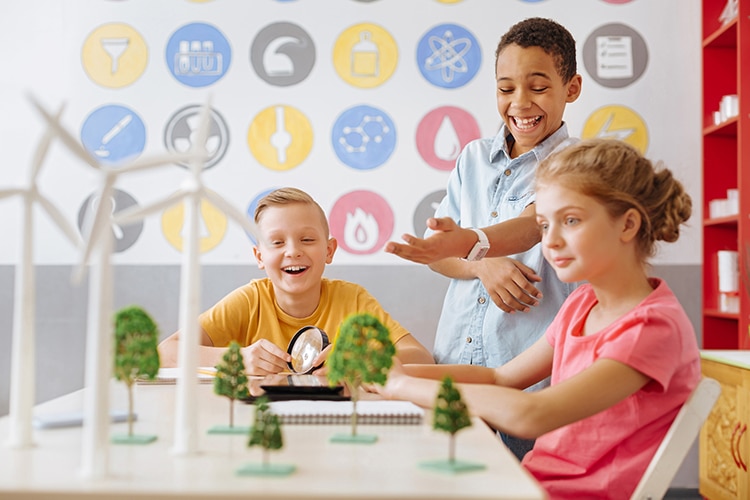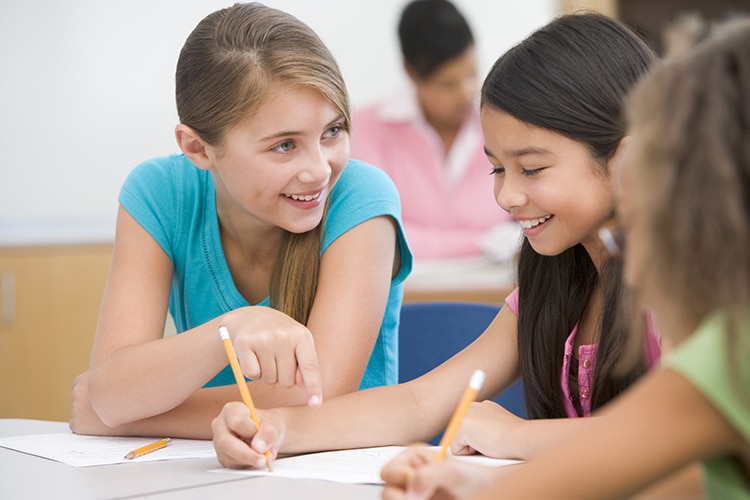
Photo: PYACOBCHUK1/Depositphotos
In elementary school, you might’ve been placed into a reading or spelling group with other kids who could parse the same length words as you. Higher-skilled groups received different assignments than lower-skilled, and each was tailored to meet the students where they were at. But is this the best way to maximize learning for everyone? Would mixing in stronger readers with weaker ones be more beneficial? Researchers at the University of Rochester and the University of Nevada came together to solve this problem by discovering the mathematically optimal way to create student groups for overall learning gains.
The research team—composed of two directors of Rochester’s Center for Health and Technology and an education professor—began their research with several basic assumptions. They assumed multiple groups would be made from the pool of students, each would have different skill levels, an optimal teaching environment exists where a student is taught at their skill level, and the “optimal grouping system” maximizes the collective benefit for all students as its goal.
They then created equations to model learning under grouping theory. Like-skill tiered grouping strategies produced groups with similar skill levels within said group. A cross-sectional grouping strategy mixed the skill level so that it was comparable across groups when assessed in totality. The former turned out to be the optimal solution, so maybe your old spelling group was the right way to teach. These findings were detailed in the journal Education Practice and Theory.
“We showed that, mathematically speaking, grouping individuals with similar skill levels maximizes the total learning of all individuals collectively,” paper author Chad Heatwole says. “If one puts like-skilled students together, instructors can teach at a level that is not too advanced or trivial for the students and optimize the overall learning of all students collectively regardless of the group.” All students will benefit, but of course, this assumes that a teacher provides equally effective teaching to all groups.
The math is there, but what if the goals are different? Adjustments would have to be made. What if coaches were trying to cull one Olympic athlete from a promising group of players? “In this latter case, you would design the coaching and train the other players for the benefit or growth of one player,” Heatwole says. “It might mean no one else benefits, while one person benefits to the highest degree. But that’s not how our approach was designed.” You could do the math, however. “That’s the beautiful part of this,” he says. “We’re just laying down the facts and saying these are the assumptions, this is the mathematical approach, and this is what the math shows. This is a practical example of how math and science can help solve age-old questions and facilitate the learning, growth, and potential of all parties.”
Researchers at the University of Rochester and the University of Nevada came together to solve this problem by discovering the mathematically optimal way to create student groups for overall learning gains.

Photo: MONKEYBUSINESS/Depositphotos
Grouping students in similarly-skilled level groups is the best method for everyone, the math shows.

Photo: ALESSANDROBIASCIOLI/Depositphotos
Related Articles:
These Are the Best Photos of Education Around the World in 2019
Special Education Teacher Compliments Every Single Student to Give Them Daily Confidence Boosts
IKEA Turns Kids’ Drawings into Real Toys to Help Promote Children’s Education
Groundbreaking Solar-Powered Classrooms Provide Cost-Efficient Education Spaces in Kenya
